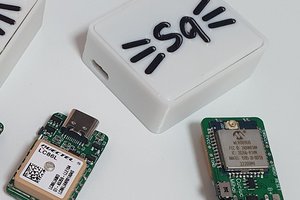I have seen many people cut corners with lithium-ion battery safety for a wide range of bad reasons and, in some cases, with little knowledge of the potential risks. Working in a lab environment with a variety of custom battery configurations, I have at times been guilty of that myself for the lack of a quick and easy way to add a simple BMS to a battery without having to configure software or purchase a new product. Of course, in-house solutions can be made, but these are often purpose built circuits that have to be tested and used for a time before they can be trusted.
When I set out to design a BMS for an ebike project, I decided to make adaptability and modularity key design objectives such that
- The same circuit design, tested and improved by the community, can be re-used for a wide variety of projects
- The same physical BMS units that have been field tested in one application can be re-configured and re-used in a different application by changing a few solder bridges
In its current form, the BMS consists of two types of units: A power module providing current sensing and interrupt capabilities and BQ77915 based stackable cell modules that each monitor and balance 3-5 cell strings. The simplicity of simpleBMS comes from the way the hardware can be adjusted by solder bridges to meet specific battery configurations and the presence of multiple footprints to allow for a variety of popular component options. The power module and cell modules have the same form factor so they can be stacked linearly or folded over in a S pattern. The crux of the assembly consists of soldering TSSOP–24 ICs, which requires steady hands but can definitely be done at a hobbyist level. Up to date schematics and PCBs as well as a more detailed walk through are available at https://gitlab.com/powindah/simplebms
For this specific ebike battery project (shown in pictures), I used a shunt resistor that resulted in a 50A cutoff and installed one power module and three cell modules on a 15S1P battery consisting of 5Ah cells. I have validated high/low temperature cutoff, cell over/under voltage for all cells and charge/discharge current limits. I have used the battery over two summer now and it has been working great.
I am currently working on a lighter battery and will likely make small improvements to the BMS design by adding the option of using ethernet connectors for sense leads and board-to-board connections



 Ampeater
Ampeater
 Bud Bennett
Bud Bennett
 mihai.cuciuc
mihai.cuciuc
 Michel Kuenemann
Michel Kuenemann
What's a "BMS?"